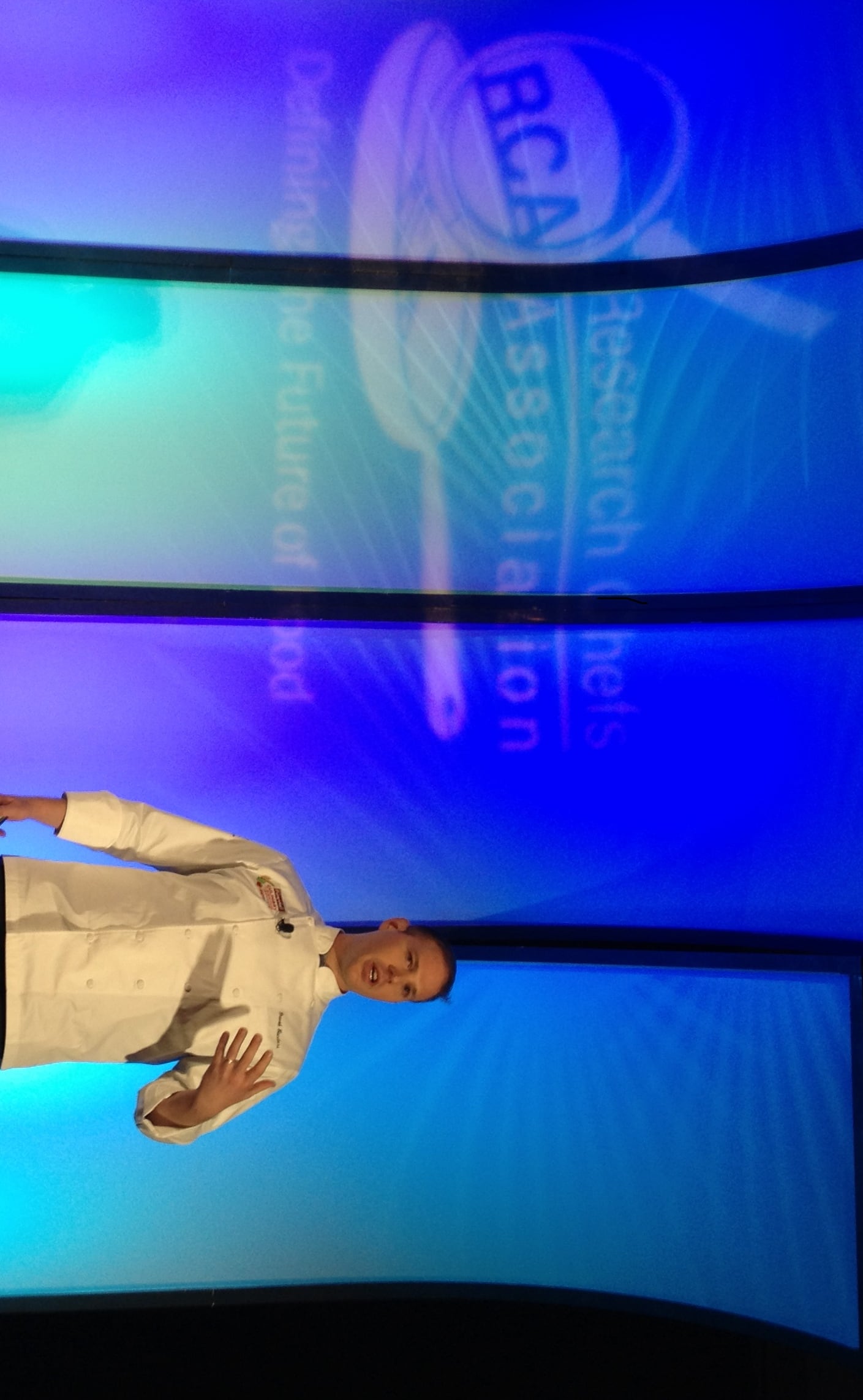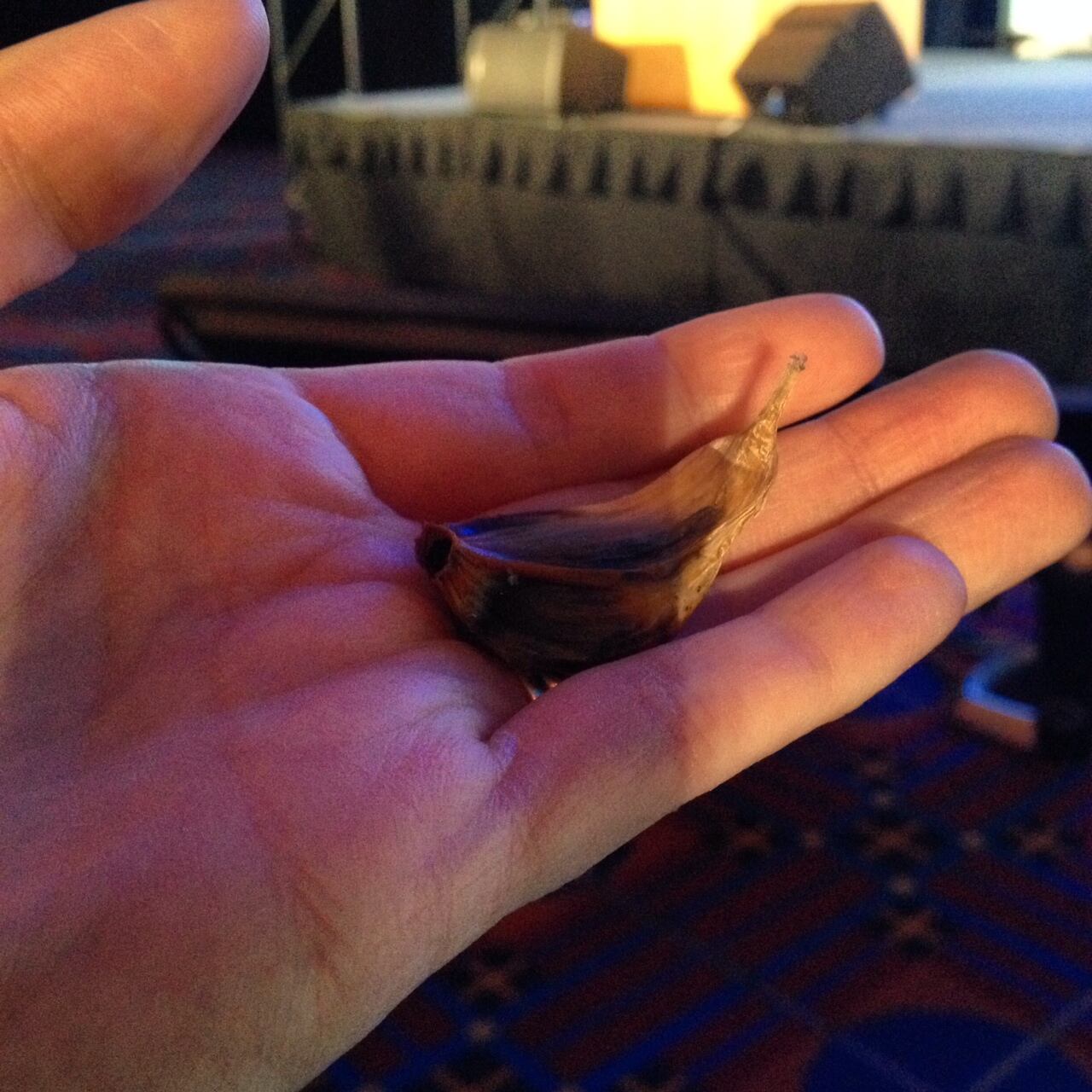For Campbell Soup Co., that meant opening a full-on Culinary & Baking Institute (CCBI) after CEO Denise Morrison decided in 2011 that it was time to “shift the company’s center of gravity” more toward innovation, David Landers, CCBI’s senior chef, said. He was speaking to attendees of the Research Chefs Association Conference in Portland, OR, last week.
Since American chemist (and former Campbell president) John Dorrance created the first condensed soup in 1897, innovation has been central to the company's growth and success. But today, “soup is a declining category,” Landers said. “The innovation of Dr. Dorrance is not holding us through. So what Campbell's is charged with now is to come up with new innovation, a new way of finding solutions for consumers for the iconic products of the future.”
Landers makes up the culinary inspiration portion of Campbell’s five-member innovation team, which also comprises a consumer insights expert, who does ethnography work; marketer, who determines spend and platform; packaging expert; and product developer (food scientist).
Innovation team isn’t bogged down with line extensions for Chunky or Goldfish
“Categories like Swanson and V8 we already know about and play in very well. Our job is to work in adjacent categories—not pasta sauce, not soup, but things that still make sense for Campbell,” he said. “We have dedicated teams just working on this portion of our business. They’re not bogged down with line extensions for Chunky soup or the next flavor of Goldfish crackers. They’re looking to find pain points with the consumer, find solutions, write them and translate that into food. Then it’s about turning those recipes into formulas, scaling them up and sending them out to the world. They’re simple steps, but hard to do.”
Because the culinary landscape is so vast—encompassing everything from the influx of Korean BBQ joints opening around the country to the explosion of coconut water in the natural channel to the the Culinary Trendscape tool provides a way to categorize the “swirling mess” of culinary trends floating through the marketplace at a given moment in order to know whether and where to act on them.

CCBI organizes culinary trends into five buckets: professional, media, restaurant, marketplace, culture and cuisine. In order to determine where a trend is in its lifecycle based on its penetration into the market, CCBI also maps six trend points. In ascending order, the stages are discovery, introduction, adoption, mainstream, established and expanded.
“Trends work their way out in concentric circles, with the sixth stage [expanded] being globally accepted flavors and experiences that are part of who we are and how we eat. It’s all about population reach.”
Campbell lives at stage five of the trend lifecycle, reflecting how we eat everyday
A trend is still niche in CCBI’s stage one—in fine dining restaurants or high-end cocktail bars, with a small, but influential audience. As it catches, it enters stage two, where it enters broader foodie conversation through outlets like Bon Appetit magazine. Once it reaches stages three and four, the trend starts showing up on casual dining (Applebee’s) and eventually fast casual (Panera, Chipotle) menus. By stage five, it’s being searched by consumers on recipe websites and created in home kitchens using products from the supermarket.
“Stage five is the mainstay of Campbell's—the center store where most of our products live. It reflects how we as a society eat. You can relate Campbell's to what’s happening in the world,” Landers said.
Finally, stage six comprises universally loved and appealing flavors that are fully established in our global conscious, such as beer, pasta and rice.
Essentially what the tool does for Campbell is boil the world down into something understandable and usable for its brands, Landers said. To illustrate, he displayed a photo of a roasted pig head he recently tried at a gastropub in Philadelphia.
“Do you think roasted pig head condensed soup a good idea?” he asked. One hand went up, which he acknowledged with a laugh. “Probably not. But on the other hand, how are we to know? Just because I, Campbell’s chef, had this dish, how do we know it’s something we should do?”

10 trends offer a case study for Trendscaping
He then outlined a handful of the 10 trends presented in the Culinary Trendscape report CCBI released this winter: Brazilian cuisine, food waste awareness, fermentation, new Jewish deli, fresh juices, sophisticated sweets, savory yogurt, beverage-inspired flavors, regional Mexican and bolder burgers. And although attendees tasted a range of fascinating samples prepared by Campbell’s chefs to highlight many of these trends (Reuben palmiers, black garlic and Vosgues beef jerky and smoked mesquite chocolate bar, to name a few), Landers was careful to note that his presentation was less about offering a list of what’s hot right now and more about elucidating CCBI’s methodology for navigating the dynamic culinary world.
“The trends we’re we are talking about today are the same conversations I’m having about food every day and all the time. They’re an articulation of the methodology in a way that is brought to life through trends; they’re not meant to be speculative; they’re about what’s happening right now,” he said.
“I need to know best time to take advantage of trends for my different brands. Campbell’s Go Soups line is at a different stage in the marketplace than condensed soup, for example. It’s about being ahead of curve and creating experiences and flavors while consumers are still interested in that food.”
